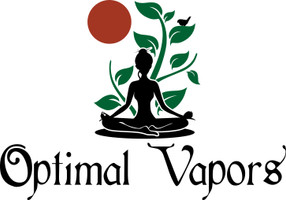Most of us are a little apprehensive when we first test out a dry herb vaporizer. Using a pipe, for example, is as simple as applying a flame to the plant and inhaling it. There are several settings to be aware of while using a dry herb vaporizer to ensure that you receive the finest flavor, strength, and throat hit possible.
Almost all dry herb vaporizers have several vaping settings, with the majority of today's devices including temperature control. Knowing what temperature to vape at is vital since certain temperatures might result in your herb losing all strength and taste, or entirely burning it.
Fortunately, most of these devices come with user manuals that explain exactly what temperature to vape at, as each device is unique and may have its own set of output parameters.
However, when it comes to vaping flowers, there are some common guidelines that can be applied to any device on the market. Because every vape fan has their own tastes, there is no specific temperature that is universally and objectively desirable.
Each option brings out distinct aspects in the terpene flavor, dry herbs' strength, and even how powerful the vapor feels against the throat when you inhale.
There is, however, an optimal temperature range, which is between 325 and 430 degrees (Fahrenheit). There are three tiers within this spectrum that cater to various vaping demands.
325-350 degrees Fahrenheit
The boiling point of the dry herbs you're looking to experience the qualities of is 315 degrees, give or take. This implies that vaping below 315 degrees will most likely not produce the desired results. This is why the standard vaping range begins at 325, which not only activates the dry herbs but also adds enough strength for you to feel the benefits.
For dry herb vaping, 325-350 degrees Fahrenheit is considered a low temperature. You'll get a good dose of delicious terpenes, including pinene, myrcene, and limonene, which have lemony and pine-like taste notes. The vapor will be cool to inhale, and harshness is unlikely to be an issue, which is a significant gain for coughers. The strength of the effects will be quite moderate yet visible, particularly in people with a poor tolerance.
Perfect for: Those who prefer flavor over effects, those who cough, and those who are new to dry herbs and have a low tolerance.
350-400 degrees Fahrenheit
Many individuals stay within this range since it serves as the ideal "middle ground," so to speak. Vaping at 350-400 degrees Fahrenheit produces more obvious cannabinoid effects while keeping the rich flavor of the terpene profile, with additional flavor notes coming to life while being slightly weaker than the low-temperature alternatives. Unless you're a newbie, the vapor is warmer and isn't recognized for being particularly unpleasant.
Perfect for: Beginners to vaping who have a tolerance to dry herbs from other types of products, those who are still sensitive to the harshness of high temperatures, those who seek a balance of cannabinoid strength and flavor, and those looking for a more mellow experience in general.
400-430 degrees Fahrenheit
The temperature range of 400-430 degrees is roughly at the top of what is a suitable temperature range for vaping dry herbs. Anything greater will most likely result in the substance deteriorating rather than activating, resulting in little, if any, potency. In addition, the flavor will be lessened, and you will most likely cough.
Many fans consider 400-430 to be the sweet spot since it produces powerful results and let's face it, that's what most people are looking for. The terpene flavor will be less intense, and the roughness will be more visible, which should be OK for experienced users. The vapor will be quite warm, and you will receive a lot of vapor every puff, giving you the extra benefit of some beautiful clouds.
Perfect for: Those looking for the most potency, those who don't care about flavor, those looking for a lot of vapor, and those with a high tolerance.
What About Vaporizers That Use Wattage?
Wattage-based dry herb vaporizers aren't as common, although they do exist as an alternative to temperature-based vaporizers. These gadgets are often smaller and more portable.
The best wattage range for dry herb is generally acknowledged to be 15 to 28 watts. Anything less than this will cause the compounds to fail to activate, and anything higher will cause your product to burn and decay. Wattage-based vaporizers also employ traditional coils, which can burn out if heated to too high a temperature.
Choosing the Best Vaping Settings
Dry herb vaping is mainly on selecting the appropriate output level for your specific tastes and flower aims. Beginners should always start with a 325-350 range, while other users can experiment with different possibilities as they see fit. Remember to prevent burning your flower, and always choose a device with efficient output adjustment and a suitable battery to meet the needs of your vaping sessions.

